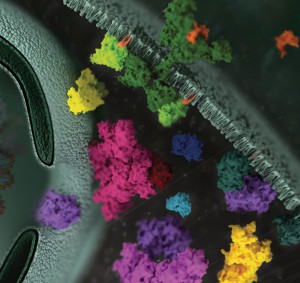 In a recent reference, Kinoshita and colleagues characterized the phosphorylation dynamics of MEK1 in human cells by using the phosphate affinity electrophoresis technique, Phos-tag sodium dodecyl sulfate–polyacrylamide gel electrophoresis (Phos-tag SDS-PAGE; 1). They found that multiple variants of MEK1 with diferent phosphorylation states are constitutively present in typical human cells.
In a recent reference, Kinoshita and colleagues characterized the phosphorylation dynamics of MEK1 in human cells by using the phosphate affinity electrophoresis technique, Phos-tag sodium dodecyl sulfate–polyacrylamide gel electrophoresis (Phos-tag SDS-PAGE; 1). They found that multiple variants of MEK1 with diferent phosphorylation states are constitutively present in typical human cells.
To investigate the relationships between kinase activity and drug efficacy researchers from the same laboratory group conducted phosphorylation profling of various MEK1 mutants by using Phos-tag SDS- PAGE (2).
They introduced mutations in of the MEK-1 coding gene that are associated with spontaneous melanoma, lung cancer, gastric cancer, colon cancer and ovarian cancer were introduced into Flexi HaloTag clone pFN21AE0668, which is suitable for expression of N-terminal HaloTag-fused MEK1 in mammalian cells. Continue reading “Mutation Analysis Using HaloTag Fusion Proteins”
